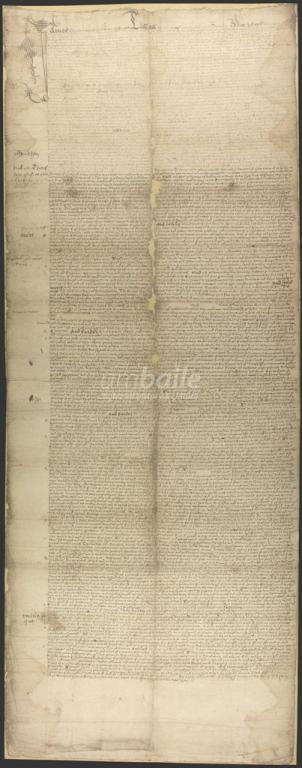
'The Great Charter' or 'Golden Charter' of Inverness 1592
By Caitlin Jackson
The popular perception of the Scottish Highlands is as a series of rural communities, but this is not the case. Just as central to the Spirit of Highlands are its urban centres.
The Great Charter of Inverness (Scottish Gaelic: Inbhir Nis) was granted in 1592 by James IV. The sixteenth century had seen a reshaping of urban society in Scotland. The export trade had been in severe decline since the fourteenth century but was revived in the wake of the reformation. This instability required greater financial surety, and thus taxes had to be raised. To do this the governments of the sixteenth century began to focus their attention on developing their urban hubs. Charters set out terms and privileges granted to a burgh in return for taxation.
Where Scottish burghs differ from their English and Welsh counterparts is through the focus that was placed on trade. Scottish royal burghs had sole rights of trade and manufacture within their specified region, creating powerful trading monopolies that could severely limit the activities of the other towns and burghs around them. This was the case with the Inverness charter. The charter stated that no ship containing goods, such as wine, salt and timber could land anywhere between the burgh and Tarbatness, stunting the growth of Tain, Thurso and Wick (Scottish Gaelic: Baile Dhubhthaich; Inbhir Theòrsa; Inbhir Ùige) to overseas trade.
Despite this negative effect, the Inverness charter gives insight into the development of specialist craft industries, working practices, and global trade. Perhaps the greatest insight the charter gave us is into the structure of urban life through the market and fair days it was granted, which allowed the trade of 'staple goods' to the region. A further eight yearly fairs were granted which allowed for international trade and allowed merchants from all over Scotland to gather and sell their wares. These centres brought wealth, skills and perhaps most importantly, notions of the wider world, which could permeate through the more rural communities of the Highlands. The chartership of this hub of manufacturing, trade and commerce demonstrates the industrialised facet of the spirit of the Highlands which can be so often overlooked.
 The Great Charter of Inverness, 1592.
The Great Charter of Inverness, 1592.Image provided by Am Baile/ Inverness Museum and Art Gallery